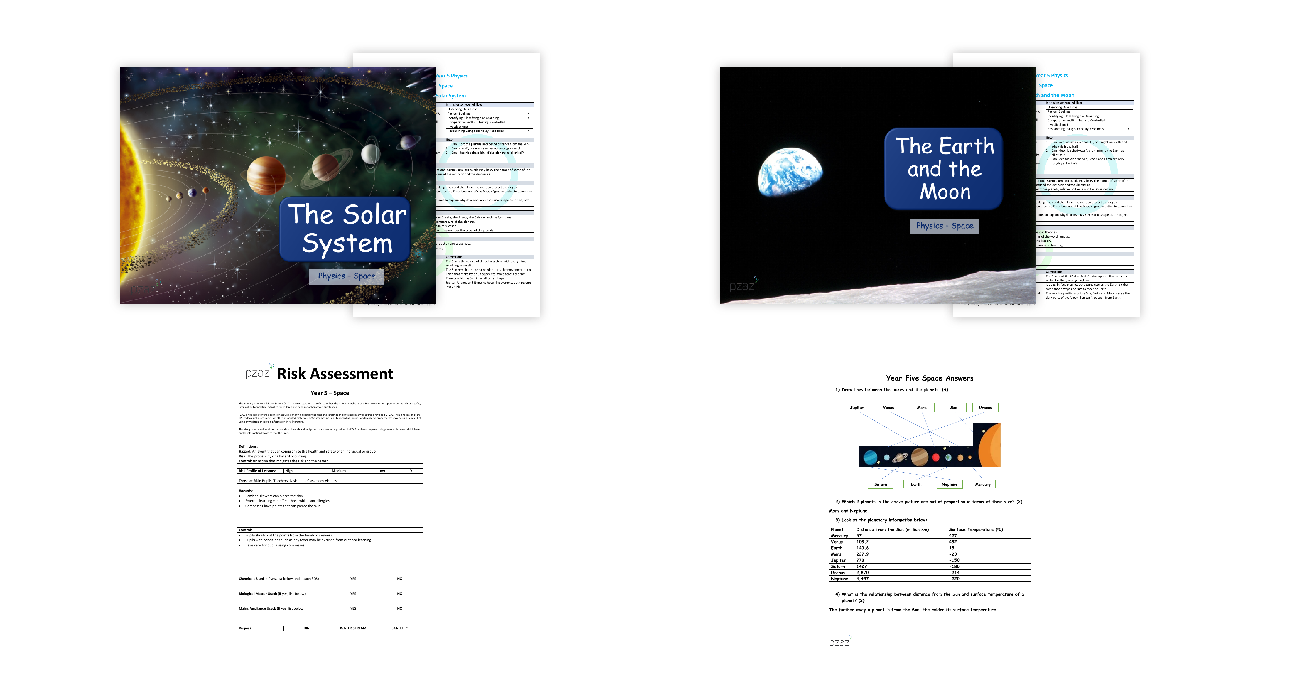Space
Science Unit Description

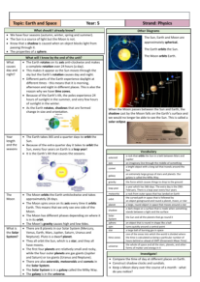
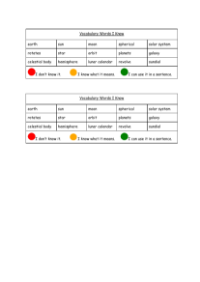
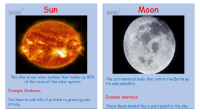
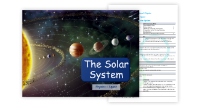
In this lesson, pupils will learn about the movement of the Earth and other planets relative to the Sun in the solar system. The students will classify planets as either rocky or gas giants and describe the orbits of the planets as elliptical.
Previous Learning
students in Pre-K and Elementary School may not have prior knowledge of Space in the National Curriculum, but they may know the names of some of the planets and that an asteroid caused the extinction of the dinosaurs. In Yr. 3, students have learned about light and forces, and in Yr. 6, they learned about how light travels in straight lines to explain shadows.
Cross-Curricular Links
- RE: students could find out about the creation myths of different cultures
- math: students will draw a graph of distance v surface temperature of the planets
- Art: students will make a model of planets and the solar system
- English: students could come up with their own mnemonic to remember the order of the planets
Misconceptions and Corrections
- The Earth is not the center of the solar system, but the Sun is.
- The Sun does not move across the sky, it remains in the same place and it is the Earth's movement that makes the Sun appear to move.
- Planets orbit the Sun in an elliptical shape, not a circular one.
- Jupiter, Uranus, and Neptune also have ring systems, not just Saturn.
The lesson will cover influential scientists such as Galileo Galilei, Nicolas Copernicus, Johannes Kepler, and others. students will also participate in activities like the Orbits of Planets and Planet Top Trumps. They will also complete a table to find the relationship between distance from the Sun and surface temperature of the planet.
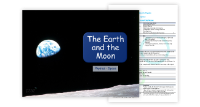
This lesson focuses on understanding the relationship between the Earth, Sun, and Moon, as well as the apparent movement of the Sun across the sky and the movement of the Moon relative to the Earth. The lesson begins with a review of the previous learning in early years foundation stage and Key Stage 1, as well as Key Stage 2 (Elementary School) curriculum links in year 3 light and year 3 forces, year 6 light. The lesson also has cross-curricular links to History, English, math, and Geography.
The misconceptions associated with the topic are also highlighted, such as the idea that the Sun is yellow, the Moon doesn’t spin, the shadow of the Earth causes phases of the Moon, and the Moon shines. Some influential scientists in this field are also mentioned, such as Aristarchos of Samos, Eratosthenes, Ptolemy, Carolyn Porco, Tycho Brahe, and Nancy Grace Norman.
Activities
Day and Night
In this activity, students use a torch and a globe to observe the change in light and shadow as the globe rotates. The objective is to understand why we have day and night on Earth and why this is cyclical.
The Sun’s Movement Across the Sky
In this activity, students use learning pads to compare the geocentric and heliocentric theories and explain the apparent movement of the Sun across the sky.
The Orbiting Moon Model
In this activity, students use the orbits card from a previous lesson, a large marble, a small marble, and a ruler to make a model of the Earth and Moon’s orbit.
Possible questions that students may encounter include: why is the Earth slightly on its side, what direction does the Earth spin, and why is sunrise at different times in different locations.
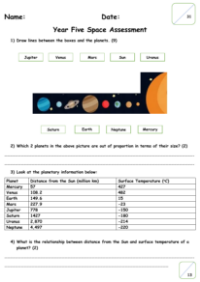
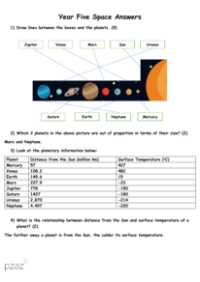
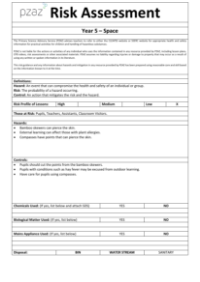





In this lesson, pupils will learn about the movement of the Earth and other planets relative to the Sun in the solar system. The students will classify planets as either rocky or gas giants and describe the orbits of the planets as elliptical.
Previous Learning
students in Pre-K and Elementary School may not have prior knowledge of Space in the National Curriculum, but they may know the names of some of the planets and that an asteroid caused the extinction of the dinosaurs. In Yr. 3, students have learned about light and forces, and in Yr. 6, they learned about how light travels in straight lines to explain shadows.
Cross-Curricular Links
- RE: students could find out about the creation myths of different cultures
- math: students will draw a graph of distance v surface temperature of the planets
- Art: students will make a model of planets and the solar system
- English: students could come up with their own mnemonic to remember the order of the planets
Misconceptions and Corrections
- The Earth is not the center of the solar system, but the Sun is.
- The Sun does not move across the sky, it remains in the same place and it is the Earth's movement that makes the Sun appear to move.
- Planets orbit the Sun in an elliptical shape, not a circular one.
- Jupiter, Uranus, and Neptune also have ring systems, not just Saturn.
The lesson will cover influential scientists such as Galileo Galilei, Nicolas Copernicus, Johannes Kepler, and others. students will also participate in activities like the Orbits of Planets and Planet Top Trumps. They will also complete a table to find the relationship between distance from the Sun and surface temperature of the planet.

This lesson focuses on understanding the relationship between the Earth, Sun, and Moon, as well as the apparent movement of the Sun across the sky and the movement of the Moon relative to the Earth. The lesson begins with a review of the previous learning in early years foundation stage and Key Stage 1, as well as Key Stage 2 (Elementary School) curriculum links in year 3 light and year 3 forces, year 6 light. The lesson also has cross-curricular links to History, English, math, and Geography.
The misconceptions associated with the topic are also highlighted, such as the idea that the Sun is yellow, the Moon doesn’t spin, the shadow of the Earth causes phases of the Moon, and the Moon shines. Some influential scientists in this field are also mentioned, such as Aristarchos of Samos, Eratosthenes, Ptolemy, Carolyn Porco, Tycho Brahe, and Nancy Grace Norman.
Activities
Day and Night
In this activity, students use a torch and a globe to observe the change in light and shadow as the globe rotates. The objective is to understand why we have day and night on Earth and why this is cyclical.
The Sun’s Movement Across the Sky
In this activity, students use learning pads to compare the geocentric and heliocentric theories and explain the apparent movement of the Sun across the sky.
The Orbiting Moon Model
In this activity, students use the orbits card from a previous lesson, a large marble, a small marble, and a ruler to make a model of the Earth and Moon’s orbit.
Possible questions that students may encounter include: why is the Earth slightly on its side, what direction does the Earth spin, and why is sunrise at different times in different locations.




